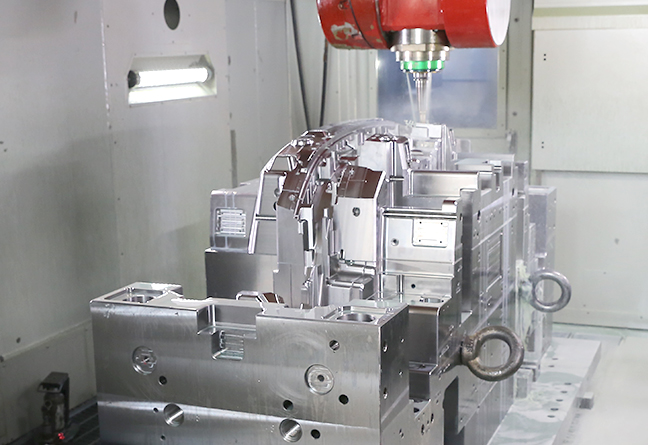We are committed to providing customers with high-quality, precision mold solutions.
Toolbox Molds
Cat:Toolbox And Accessories Mold
Toolbox molds encompass a variety of types designed to produce different styles and sizes of toolbox...
See Details
A Pipe Fittings Mold is typically designed to produce plastic parts that join two or more pipes together. These fittings include elbows, tees, reducers, couplings, and end caps, which are commonly used in plumbing, gas supply systems, chemical transport, and irrigation. The shape and specifications of the fitting determine the mold's configuration, requiring careful calculation and precision engineering during design and fabrication.

The materials used to manufacture a Pipe Fittings Mold must withstand high temperatures, pressure, and repeated cycles. Common choices include hardened tool steel and stainless steel, which offer durability and wear resistance. A well-constructed Pipe Fittings Mold can run for tens or even hundreds of thousands of cycles if properly maintained. This is especially important in high-volume production environments where consistent output is required.
During operation, a Pipe Fittings Mold is installed into an injection molding machine. The machine injects melted thermoplastic resin, such as PVC, CPVC, PP, or PE, into the mold cavity. After the molten plastic fills the cavity, it cools and solidifies to form the final shape of the pipe fitting. The mold then opens, and the part is ejected. The cycle repeats continuously. The efficiency and quality of the process depend heavily on the mold's design and thermal balance.
The structure of a Pipe Fittings Mold includes several components: the core, cavity, runner system, gating system, and cooling channels. The core and cavity form the shape of the final fitting. The runner and gate distribute the plastic into the mold, while the cooling channels regulate the temperature during molding. A properly designed Pipe Fittings Mold ensures uniform filling, cooling, and easy part release, which contributes to dimensional accuracy and surface finish of the final product.
Accuracy is vital in a Pipe Fittings Mold, as any deviation from required dimensions can cause joint failure in the final piping system. Pipe fittings must match precisely with the pipes they are intended to connect. Tolerances are often tight, especially in pressure applications. Therefore, mold makers use precision machining methods such as CNC milling, EDM (electrical discharge machining), and grinding to meet these requirements.
Customization is another important factor in the production of a Pipe Fittings Mold. Clients often require fittings that match specific standards or geometries based on the intended application. This could include different wall thicknesses, angles, or connection types. A custom Pipe Fittings Mold must be developed to accommodate these needs. This involves CAD modeling, mold flow analysis, and prototype testing to verify that the mold performs as expected under real production conditions.
Another aspect to consider is the production volume. Some Pipe Fittings Mold designs are optimized for short-run or prototype production, using aluminum or soft steel for faster and more affordable fabrication. Others are designed for high-volume runs with hardened components and hot runner systems, which minimize waste and increase cycle speed.
Regular maintenance is critical to extend the service life of a Pipe Fittings Mold. This includes cleaning, lubrication, inspection for wear, and timely replacement of worn components such as ejector pins or seals. Poor maintenance can flash, incomplete parts, or misalignment, affecting both quality and productivity. Mold maintenance procedures are typically scheduled based on the number of cycles and operating conditions.
From an economic standpoint, investing in a high-quality Pipe Fittings Mold can yield significant returns. While the initial cost is higher than a standard mold, the improved durability, reduced downtime, and lower defect rate contribute to long-term savings. Many manufacturers select mold suppliers based on their ability to provide long-term support, including mold testing, repair services, and technical documentation.
Contact Us